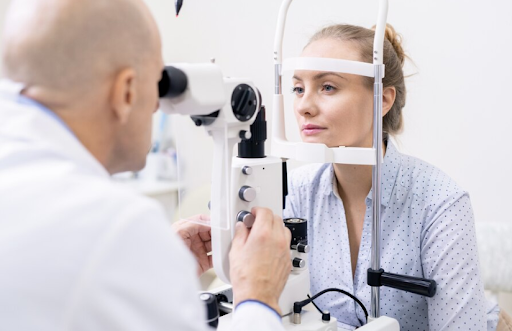Your primary care doctor aims to preserve your eye health and help you live life to the fullest. Eye-sight is definitely the main tool for communicating between us and the world, so it is critically important to provide this care.
In this informative blog post, we’ll share the 5 most notable signs to visit your eye specialist to get treated before it’s too late.
Sign #1 — Eye pain
Any eye pain or discomfort is unusual and might signify a serious condition. Conditions like acute angle-closure glaucoma or ocular tumors can lead to intolerable pain in the eye and can make an individual blind in less than a week.
Other more frequent reasons may include allergies as a cause of irritation or a foreign body in the eye, pink eye, dry eye syndrome as well as the scratch or sunburn on the cornea. Hence, it could be possible for your eye care specialist or pediatric ophthalmology surgeon who will recommend to get a problem-specific solution or treatment.
Sign #2 — Blurry vision
Blurry vision (often caused by various vision problems) may also indicate something terrible, such as an eye disease or condition. If your vision is suddenly blurry or looks even blurrier than usual, going to the eye doctor is urgent. It is very important to find the cause as early as possible.
An eye doctor may prescribe a simple prescription as a solution; however, during a comprehensive eye exam, a doctor can detect glaucoma, macular degeneration, retinal disease, and other serious eye conditions that can cause blurry vision.
Sign #3 — Frequent headaches
Headaches are part of life; they come from emotional, physical, and psychological stress. This stress can cause a variety of headaches, from dull pain in and around the temples to sharp pain around or behind the eyes.
Chronic headaches might be symptoms of eyestrain, glaucoma, or infection. They are also symptoms of binocular vision problems, such as amblyopia or convergence insufficiency.
Sign #4 — Double Vision
Double vision may occur as a result of trauma, stroke, tumor, or sickness. If your vision disorder is permanent or comes with no warning, see your ophthalmologist as soon as possible. Sometimes, the double vision or ‘diplopia’ is the result of some different factors.
When the cause of diplopia is astigmatism, keratoconus, or dry eye, the condition can be resolved very well by using eyeglasses, contact lenses, or dry eye treatment.
This might happen because both eyes provide different inputs to the brain, making coordination difficult. Your eye doctor could recommend vision therapy if this is the diagnosis.
Sign #5 — Watery eyes
The surprising side effect of dry eyes syndrome is also crying eyes that do not stop. If no lubricant is produced, it takes away the necessary simple moisture, leading to the overproduction of tears. Watery eyes may happen if the moisture is leaving your eyes too quickly for oils to be there to stop it.
As with other dry eye symptoms, treating the main condition instead of using over-the-counter drops could be an appropriate remedy for targeting the root cause. If symptoms persist, it is advised to visit your eye doctor.
